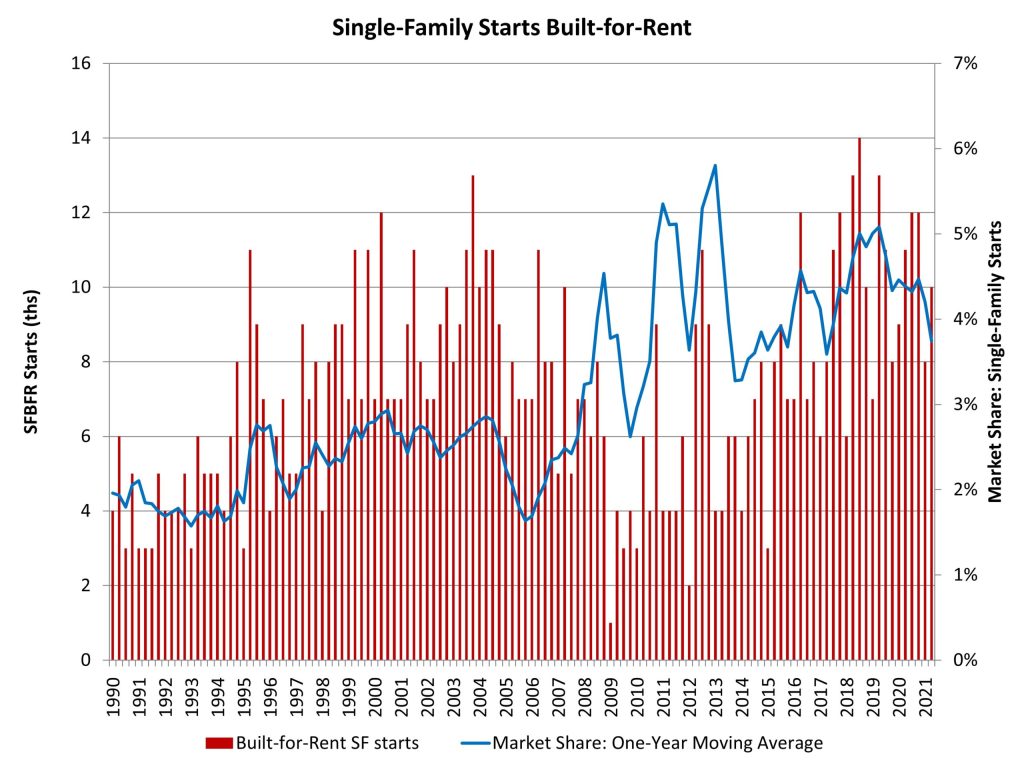Chart: Single-Family Built-for-Rent Continues Expanding
Originally Published by: NAHB — August 18, 2021
SBCA appreciates your input; please email us if you have any comments or corrections to this article.
The number of single-family built-for-rent (SFBFR) construction starts is expanding as demand for single-family structures, both for-sale and for-rent, remains strong. The SFBFR market is a way to add inventory amid concerns over housing affordability and downpayment requirements in the for-sale market, particularly during a period when people want more space and a single-family structure. Single-family built-for-rent construction differs with respect to structural characteristics compared to other newly-built single-family homes, particularly with respect to home size.
According to NAHB’s analysis of data from the Census Bureau’s Quarterly Starts and Completions by Purpose and Design, there were approximately 10,000 single-family built-for-rent starts during the second quarter of 2021. Over the last four quarters, 42,000 such homes began construction, which is an 8% gain compared to the 39,000 estimated SFBFR starts for the four prior quarters.
Given the small size of this market segment, the quarter-to-quarter movements typically are not statistically significant. The current four-quarter moving average of market share (3.7%) remains higher than the historical average of 2.7% (1992-2012) but is down from the 5.8% reading registered at the start of 2013.
Importantly, as measured for this analysis, the estimates noted above only include homes built and held by the builder for rental purposes. Those estimates exclude homes that are sold to another party for rental purposes, which NAHB estimates may represent another two or three percent of single-family starts. Indeed, the Census data notes a notable jump in single-family homes built as condos (non-fee simple) in the second quarter, with this share standing at 5.3%. Many of these homes will be used for rental purposes.

With the onset of the Great Recession and declines in the homeownership rate, the share of built-for-rent homes increased in the years after the recession. While the market share of SFBFR homes is small, it has been trending higher. As more households seek lower density neighborhoods and single-family residences, but some may do so from the perspective of renting, the SFBFR market will likely expand in the quarters ahead as the economy recovers from the virus crisis.


